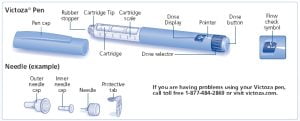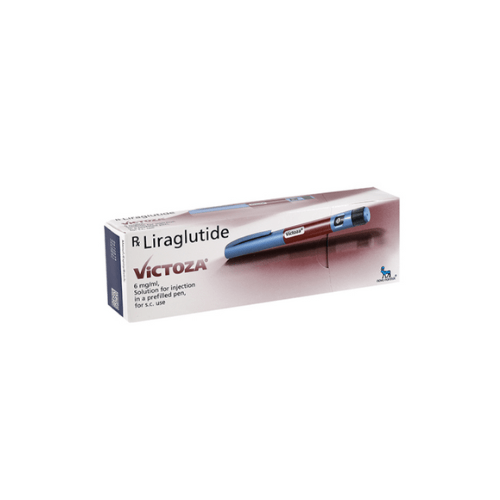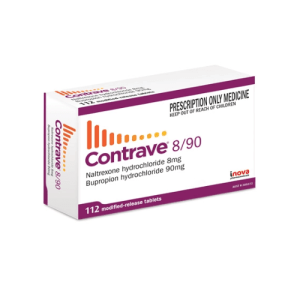Victoza
Victoza Reviews
In the vast landscape of diabetes management, Victoza emerges as a beacon of hope for many navigating the complexities of their health. However, before embarking on a journey with Victoza, it’s essential to grasp its intricacies, including potential benefits, side effects, dosing guidelines, and financial considerations.
Understanding Victoza
Victoza isn’t just another medication; it’s a multifaceted solution with the potential to impact various aspects of health. While its primary function revolves around managing type 2 diabetes, Victoza has also garnered attention for its role in weight loss. Unlike traditional weight loss medications, Victoza’s mechanism of action extends beyond mere appetite suppression. By mimicking the action of a hormone called GLP-1, Victoza helps regulate blood sugar levels, promotes insulin secretion, and slows down digestion, leading to feelings of fullness and potentially aiding weight loss.
Exploring Victoza’s Benefits
One of the most significant draws of Victoza is its potential for weight loss. Countless individuals have reported not only improved glycemic control but also noticeable reductions in weight while using Victoza. This dual benefit has made Victoza an appealing option for those struggling with both diabetes management and weight loss goals. However, it’s essential to approach Victoza as part of a comprehensive treatment plan, incorporating dietary changes, exercise, and regular monitoring under the guidance of a healthcare professional.
How to inject Victoza?
Injecting Victoza is a straightforward process, but it’s essential to follow the instructions provided by your healthcare provider and outlined in the medication’s packaging.

Here’s a general guide:
- Preparation: Wash your hands thoroughly with soap and water. Gather all necessary supplies, including the Victoza pen, alcohol wipes, and a sharps disposal container.
- Inspect the Pen: Check the expiration date and visually inspect the Victoza pen for any signs of damage or tampering. Do not use the pen if it appears damaged or if the medication is cloudy or discolored.
- Prepare the Injection Site: Choose an injection site on your abdomen, thigh, or upper arm. Clean the area with an alcohol wipe and allow it to dry completely.
- Prepare the Pen: Remove the cap from the Victoza pen. If it’s the first time using the pen, you’ll need to prime it by turning the dose selector until “0.6 mg” is shown. Then, press the injection button until “0” is displayed and a drop of medication appears at the needle tip. If you’re using a higher dose, follow the priming instructions provided with the pen.
- Injecting the Medication: Pinch the cleaned skin at the injection site. Hold the Victoza pen at a 90-degree angle to the skin and insert the needle fully. Press the injection button firmly to deliver the dose. Keep the button pressed for at least 6 seconds to ensure the full dose is administered.
- Remove the Pen: After injecting the medication, release the injection button and carefully remove the needle from the skin. Do not recap the needle.
- Disposal: Dispose of the used needle and pen in a sharps disposal container according to local regulations. Do not reuse needles or share your Victoza pen with others.
- Post-Injection: Gently apply pressure to the injection site with a clean cotton ball or tissue. If bleeding occurs, apply a bandage if necessary.
- Storage: Store the Victoza pen in the refrigerator when not in use. Once in use, it can be kept at room temperature (below 86°F or 30°C) for up to 30 days.
Remember, if you have any questions or concerns about injecting Victoza, don’t hesitate to consult with your healthcare provider for personalized guidance and support.
Navigating Victoza’s Side Effects
Like any medication, Victoza isn’t without its potential side effects. While many users tolerate it well, some individuals may experience gastrointestinal issues such as nausea, vomiting, or diarrhea, especially when starting Victoza or increasing the dose. These side effects typically diminish over time as the body adjusts to the medication. However, it’s crucial to communicate any concerns with your healthcare provider, who can offer guidance on managing side effects and adjusting your treatment plan if necessary.
Crucial Considerations
Before incorporating Victoza into your treatment regimen, it’s essential to consider various factors, including dosing requirements and financial implications. Victoza is typically administered once daily via a convenient pen device. Understanding the proper dosing regimen is crucial for maximizing its effectiveness and minimizing potential side effects. Additionally, while Victoza offers significant benefits, its cost may be a factor for some individuals. Exploring insurance coverage options and potential assistance programs can help alleviate financial burdens associated with Victoza therapy.
Frequently Asked Questions
What is Victoza?
Victoza is a medication primarily used to treat type 2 diabetes by helping to regulate blood sugar levels and may also aid in weight loss.
Why am I not losing weight on Victoza?
Individual responses to medications vary. Consulting with a healthcare provider can help address specific concerns and adjust treatment plans accordingly.
What is Victoza used for?
Victoza is primarily used to improve glycemic control in adults with type 2 diabetes and may also aid in weight loss.
How long can you stay on Victoza?
The duration of Victoza treatment varies depending on individual health needs and treatment goals. Consult with a healthcare provider for personalized guidance.
How does Victoza work?
Victoza works by mimicking the action of a hormone called GLP-1, which helps regulate blood sugar levels and may also contribute to weight loss.
How to use Victoza pen?
Victoza pens come with instructions for use. It’s crucial to follow these instructions carefully and seek clarification from a healthcare provider if needed.
Where to inject Victoza?
Victoza is typically injected subcutaneously into the abdomen, thigh, or upper arm. Rotating injection sites can help minimize discomfort and ensure proper absorption.
In conclusion, Victoza represents a multifaceted approach to diabetes management and weight loss. By understanding its potential benefits, side effects, dosing guidelines, and financial considerations, individuals can make informed decisions about incorporating Victoza into their treatment plans. Remember, open communication with a healthcare provider is essential to maximizing the benefits of Victoza while minimizing any potential risks.





